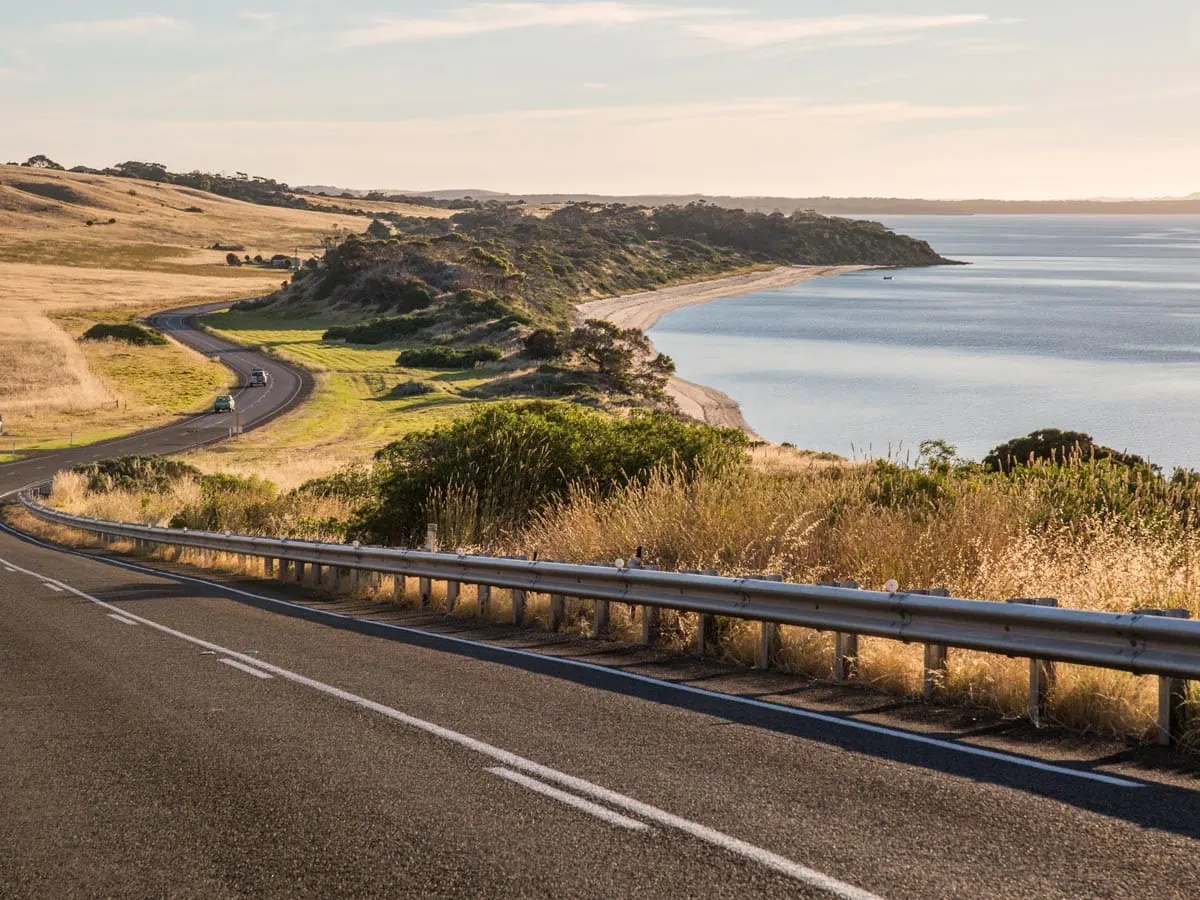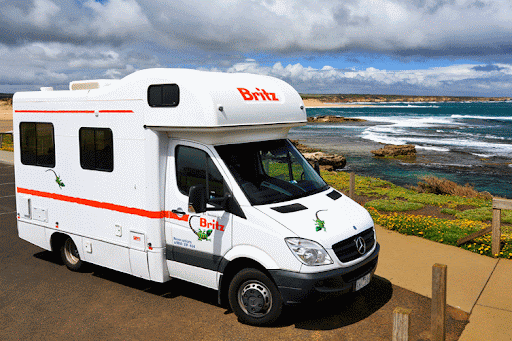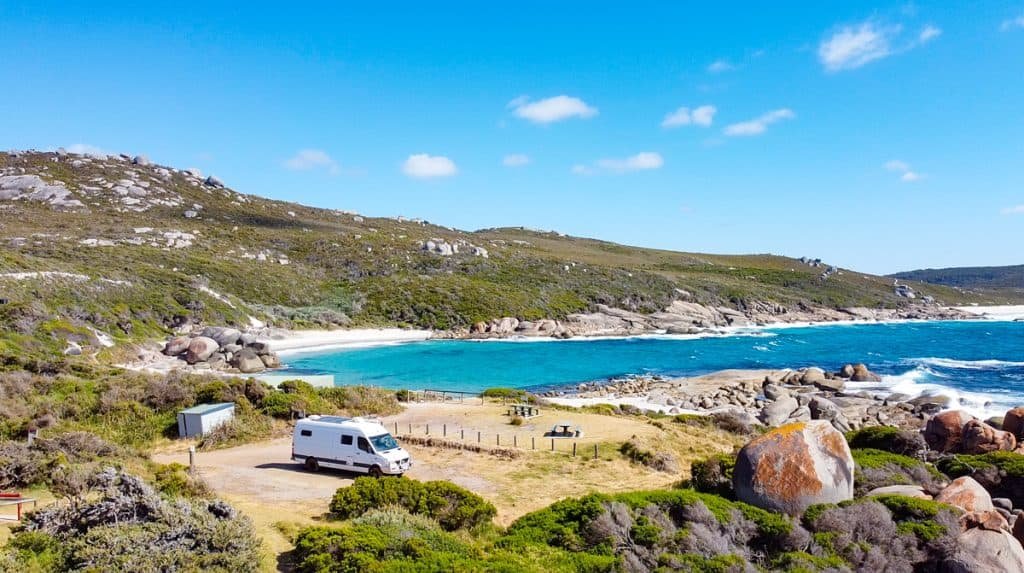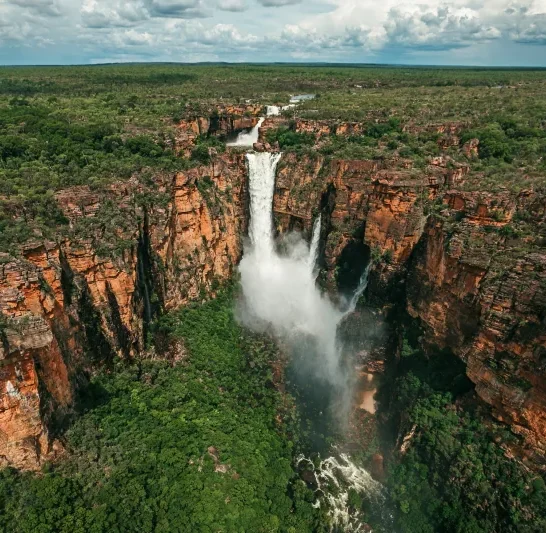Australia is a dream destination for many travelers, and for good reason. With its stunning landscapes, diverse wildlife, vibrant cities, and endless stretches of coastline, it’s a country that promises adventure at every turn. But let’s face it: planning an Australia road trip can feel overwhelming, especially when it comes to budgeting. How much does it cost to travel to Australia? What are the daily expenses? And how can you make the most of your trip without breaking the bank?
In this blog post, we’ll break down everything you need to know about your Australia road trip budget. From renting a campervan to finding budget accommodation, food costs, and activities, we’ve got you covered. Whether you’re a solo traveler, a couple, or a family, this guide will help you plan an unforgettable Australia road trip without overspending. Let’s dive in!
Australia Road Trip Budget: A Detailed Cost Breakdown
Table of contents
- Australia Road Trip Budget: A Detailed Cost Breakdown
- Australia Road Trip Budget: How Much Does It Cost to Travel to Australia?
- 1. Renting a Campervan in Australia: How Much Does It Cost?
- 2. How to Find Budget Accommodation and Free Campsites in Australia
- 3. Cost of Food in Australia
- 4. Activities and Miscellaneous Australia Vacation Cost: How to Budget for Your Australia Road Trip
- Australia Trip Budget: In Conclusion

Disclosure: Some links in this post are affiliate links. If you make a purchase through one of these links, we may earn a small commission (at no extra cost to you!). We're very grateful when you use our links to make a purchase:-).
Australia Road Trip Budget: How Much Does It Cost to Travel to Australia?
The cost of traveling to Australia varies depending on your travel style, the duration of your trip, and the activities you plan to do. On average, a mid-range traveler can expect to spend around 100–100–150 AUD per day, while budget travelers can get by on 50–50–80 AUD per day. Of course, this doesn’t include flights to Australia, which can range from 800–800–1,500 USD depending on your departure location and the time of year.
To give you a clearer picture, let’s break down the key expenses you’ll encounter on your Australia road trip.
1. Renting a Campervan in Australia: How Much Does It Cost?

Renting a campervan is one of the most popular and cost-effective ways to explore Australia. It gives you the freedom to travel at your own pace, access remote areas, and save on accommodation costs by combining transport and lodging into one. However, the cost of renting a campervan can vary significantly depending on several factors. Let’s break it down in detail:
Rent of the Campervan
The cost of renting a campervan depends on the type of vehicle, the rental company, the season, and the duration of your rental. Here’s a general idea of what to expect:
- Basic Campervans: These are compact, no-frills vehicles with essential amenities like a bed, small kitchenette, and storage. Prices typically range from 60–60–150 AUD per day.
- Mid-Range Campervans: These offer more space and comfort, often with additional features like a toilet, shower, and better kitchen facilities. Prices range from 150–150–250 AUD per day.
- Luxury Motorhomes: Fully equipped with modern amenities, these are ideal for travelers who want a home-on-wheels experience. Prices can range from 250–250–400+ AUD per day.
Pro Tip: Booking in advance, especially during peak seasons (December–February), can help you secure better rates.
Daily Rental Costs
Most campervan rental companies charge a daily rate, which often includes unlimited kilometers. However, some companies may impose mileage limits, so be sure to check the terms and conditions. Additional fees may apply for:
- One-Way Rentals: If you plan to pick up the campervan in one city and drop it off in another, you may incur a one-way fee.
- Extra Mileage: If you exceed the included mileage limit, you’ll be charged per kilometer (usually 0.25–0.25–0.50 AUD per km).
Insurance
Insurance is a crucial part of renting a campervan. Most rental companies include basic insurance in the rental price, but it often comes with a high excess (the amount you’re liable for in case of damage or theft). To reduce your liability, you can purchase additional coverage:
- Reduced Excess Packages: These can cost 10–10–30 AUD per day and lower your excess to 0–0–500 AUD.
- Full Coverage: Some companies offer comprehensive insurance for 20–20–50 AUD per day, which eliminates your excess entirely.
Pro Tip: Check if your travel insurance covers rental vehicle excess, as this can save you money on additional coverage.
Check Prices Online
To find the best deals, compare prices across multiple rental companies. Websites like WayAway.io and Trip.com are excellent resources for comparing campervan rentals and securing discounts. Use these links to check prices:
WayAway.io
Trip.com
Costs for Petrol
Fuel is another significant expense on an Australia road trip. Petrol prices in Australia fluctuate but generally range from 1.50–1.50–2.00 AUD per liter. The cost of fuel will depend on:
- Distance Traveled: Australia is vast, so plan your route carefully to minimize unnecessary driving.
- Fuel Efficiency: Smaller campervans are more fuel-efficient, while larger motorhomes consume more petrol.
On average, you can expect to spend 50–50–100 AUD per day on petrol, depending on your driving habits and the type of campervan.
Additional Costs
- Camping Fees: While free campsites are available, paid campsites with facilities like showers, toilets, and power hookups typically cost 20–20–50 AUD per night.
- Tolls and Road Fees: Some highways and bridges in Australia charge tolls, so factor these into your budget.
- Maintenance and Repairs: While rare, unexpected repairs can happen. Ensure your rental agreement includes roadside assistance.
How to Save Money on Campervan Rentals
- Travel Off-Season: Prices are lower during the shoulder seasons (March–May and September–November).
- Book Early: Secure lower rates by booking your campervan several months in advance.
- Compare Rental Companies: Use platforms like WayAway.io and Trip.com to find the best deals.
- Choose a Smaller Campervan: Smaller vehicles are cheaper to rent and more fuel-efficient.
- Use Free Campsites: Save on accommodation costs by staying at free or low-cost campsites.
Budget for Renting a Campervan
Here’s a our budget for a 14-day campervan rental:
- Campervan Rental: 100AUD/dayx14days=∗∗100AUD/dayx14days=∗∗1,400 AUD**
- Insurance: 20AUD/dayx14days=∗∗20AUD/dayx14days=∗∗280 AUD**
- Petrol: 70AUD/dayx14days=∗∗70AUD/dayx14days=∗∗980 AUD**
- Campsites: 30AUD/nightx14nights=∗∗30AUD/nightx14nights=∗∗420 AUD**
Total Estimated Cost: $3,080 AUD
Renting a campervan is an excellent way to experience Australia’s breathtaking landscapes while keeping costs manageable. By planning ahead and comparing prices, you can find a campervan that fits your budget and travel style.
2. How to Find Budget Accommodation and Free Campsites in Australia

Accommodation is one of the biggest expenses on any trip, but when you’re on an Australia road trip, there are plenty of ways to save money without sacrificing comfort or convenience. From paid campsites with excellent facilities to free campsites in stunning locations, Australia offers a wide range of options for budget-conscious travelers. Here’s everything you need to know about finding budget accommodation and free campsites in Australia.
Paid Campsites
Paid campsites are a great option if you’re looking for facilities like showers, toilets, power hookups, and BBQ areas. They’re especially useful if you’re traveling in a campervan or motorhome and need access to amenities. Here’s what you need to know:
- Cost: Paid campsites typically range from 20–20–50 AUD per night, depending on the location and facilities.
- Popular Chains: Some of the most well-known paid campsite chains in Australia include:
- Big4 Holiday Parks: Known for their family-friendly facilities, including swimming pools, playgrounds, and kitchens.
- Discovery Parks: Offer a range of accommodations, from powered sites for campervans to cabins.
- National Park Campsites: These are often more basic but located in stunning natural settings. Fees usually go toward conservation efforts.
Pro Tip: Many paid campsites offer discounts for longer stays or memberships (e.g., Big4 Membership), so it’s worth checking for deals.
Free Campsites
Australia is famous for its free campsites, which are perfect for travelers on a tight budget. These campsites are often located in remote, scenic areas, making them ideal for those who want to immerse themselves in nature. However, free campsites usually have limited or no facilities, so you’ll need to be self-sufficient.
- Cost: Free campsites are, as the name suggests, free of charge. However, some may ask for a small donation to support maintenance.
- Facilities: Most free campsites have basic amenities like picnic tables and fire pits, but you’ll need to bring your own water, toilet facilities, and power.
- Popular Apps and Websites: Use these resources to find free campsites:
- WikiCamps: A user-generated app that lists campsites, including free ones, with reviews and photos.
- CamperMate: Another popular app that helps you find free and low-cost campsites, as well as other travel essentials like petrol stations and laundromats.
- FreeCampingAustralia.com: A comprehensive website with detailed information on free campsites across the country.
Pro Tip: Always check the latest reviews and regulations for free campsites, as some may have restrictions on stays (e.g., 24–48 hours maximum).
Tips for Staying at Free Campsites
- Be Self-Sufficient: Bring your own water, food, and toilet facilities. A portable toilet and solar shower can be lifesavers.
- Leave No Trace: Always clean up after yourself and respect the environment.
- Arrive Early: Free campsites can fill up quickly, especially during peak travel seasons.
- Check Local Regulations: Some areas may have fire bans or restrictions on pets.
Other Budget Accommodation Options
If you’re not camping, there are still plenty of ways to save on accommodation in Australia:
- Hostels: Dorm beds in hostels typically cost 20–20–40 AUD per night, while private rooms range from 60–60–100 AUD.
- Airbnb: Renting a room or an entire apartment can be cost-effective, especially for groups or families.
- House Sitting: Websites like TrustedHousesitters allow you to stay in someone’s home for free in exchange for looking after their pets or property.
- Farm Stays: Some farms offer free or low-cost accommodation in exchange for a few hours of work each day (a practice known as “WWOOFing”).
How to Save Money on Accommodation
Use Booking Platforms: Websites like WayAway.io (click here to book) and Trip.com (click here to book) offer great deals on accommodations, including campsites, hostels, and hotels.
Travel Off-Season: Accommodation prices are lower during the shoulder seasons (March–May and September–November).
Join Loyalty Programs: Many campsite chains and hostel networks offer discounts for members.
Cook Your Own Meals: Staying at campsites or accommodations with kitchen facilities can save you money on food.
Budget for Accommodation
Here’s our budget for a 14-day Australia road trip:
- Paid Campsites: 30AUD/nightx7nights=∗∗30AUD/nightx7nights=∗∗210 AUD**
- Free Campsites: 0AUD/nightx7nights=∗∗0AUD/nightx7nights=∗∗0 AUD**
- Hostels: 30AUD/nightx2nights=∗∗30AUD/nightx2nights=∗∗60 AUD**
Total Estimated Cost: $270 AUD
By combining paid campsites, free campsites, and other budget accommodation options, you can significantly reduce your Australia road trip expenses. Whether you’re camping under the stars or staying in a cozy hostel, there’s a budget-friendly option for every traveler.
3. Cost of Food in Australia
Food is an essential part of any travel experience, and Australia offers a diverse culinary scene that caters to all tastes and budgets. However, dining out in Australia can be expensive, especially if you’re not careful. The good news is that there are plenty of ways to enjoy delicious meals without breaking the bank. In this section, we’ll break down the cost of food in Australia and share tips on how to save money while eating well.
Groceries: Cooking Your Own Meals
One of the easiest ways to save money on food in Australia is by cooking your own meals. Most campervans come equipped with a small kitchenette, and many hostels and campsites have communal kitchens. Here’s what you can expect to spend on groceries:
- Weekly Grocery Budget: On average, a budget-conscious traveler can expect to spend around 50–50–70 AUD per week on groceries. This includes staples like bread, pasta, rice, vegetables, and some meat or protein.
- Supermarkets: The two main supermarket chains in Australia are Coles and Woolworths, which offer a wide range of affordable products. Aldi is another budget-friendly option.
- Local Markets: Visiting local farmers’ markets can be a great way to buy fresh produce at lower prices. Markets like Queen Victoria Market in Melbourne or Sydney Fish Market are popular among locals and tourists alike.
Pro Tip: Look for discounted items at supermarkets, especially in the evenings when perishable goods like bread and meat are often marked down.
Eating Out: Budget Options
If you prefer to eat out, there are plenty of affordable options in Australia. Here’s a breakdown of what you can expect to spend:
- Budget Restaurants and Cafes: A meal at a budget restaurant or cafe typically costs 15–15–25 AUD. Many cafes offer daily specials or set menus that provide good value for money.
- Fast Food: A meal at a fast-food chain like McDonald’s or Hungry Jack’s costs around 10–10–15 AUD.
- Takeaway: Takeaways like fish and chips, kebabs, or pizza cost 10–10–20 AUD per meal.
- Coffee: Australians take their coffee seriously, and a cup of coffee (flat white, cappuccino, etc.) typically costs 4–4–5 AUD.
Pro Tip: Many pubs and bars offer “cheap eats” or “happy hour” deals, especially during weekdays. Look out for these to save money.
Mid-Range and Fine Dining
If you’re looking to splurge on a special meal, Australia has plenty of mid-range and fine dining options. Here’s what you can expect to spend:
- Mid-Range Restaurants: A meal at a mid-range restaurant typically costs 30–30–50 AUD per person, excluding drinks.
- Fine Dining: Fine dining experiences can cost $100+ AUD per person, depending on the restaurant and menu.
Pro Tip: Many fine dining restaurants offer lunch specials or set menus that are more affordable than their dinner options.
Street Food and Food Trucks
Street food and food trucks are becoming increasingly popular in Australia, offering a wide range of cuisines at affordable prices. Here’s what you can expect:
- Cost: Street food and food truck meals typically cost 10–10–20 AUD.
- Popular Options: Look out for food trucks serving gourmet burgers, tacos, dumplings, and more. Cities like Melbourne and Sydney have vibrant street food scenes.
Alcohol and Drinks
Alcohol can be expensive in Australia, so it’s worth budgeting for this if you plan to drink. Here’s a rough guide:
- Beer: A pint of beer at a pub costs around 8–8–12 AUD.
- Wine: A glass of wine at a restaurant costs 8–8–15 AUD, while a bottle from a supermarket costs 10–10–20 AUD.
- Cocktails: Cocktails at bars and restaurants typically cost 15–15–20 AUD.
Pro Tip: Buying alcohol from supermarkets or bottle shops (liquor stores) is much cheaper than drinking at bars or restaurants.
How to Save Money on Food
- Cook Your Own Meals: This is the most effective way to save money on food.
- Take Advantage of Free Breakfasts: Many hostels and budget accommodations offer free breakfast.
- Look for Deals: Use apps like EatClub and TheFork to find discounts and special offers at restaurants.
- Share Meals: Portions in Australia are often large, so consider sharing meals to save money.
- BYO Restaurants: Some restaurants allow you to bring your own alcohol (BYO), which can save you money on drinks.
Budget for Food
Here’s our budget for a 14-day Australia road trip:
- Groceries: 60AUD/weekx2weeks=∗∗60AUD/weekx2weeks=∗∗120 AUD**
- Eating Out: 20AUD/dayx7days=∗∗20AUD/dayx7days=∗∗140 AUD**
- Coffee: 5AUD/dayx14days=∗∗5AUD/dayx14days=∗∗70 AUD**
- Alcohol: 30AUD/weekx2weeks=∗∗30AUD/weekx2weeks=∗∗60 AUD**
Total Estimated Cost: $390 AUD
By cooking your own meals, taking advantage of budget dining options, and being mindful of your spending, you can enjoy delicious food in Australia without blowing your budget. Whether you’re savoring a gourmet meal at a fine dining restaurant or enjoying a simple picnic by the beach, Australia’s culinary scene has something for everyone. Bon appétit!
4. Activities and Miscellaneous Australia Vacation Cost: How to Budget for Your Australia Road Trip
When planning your Australia road trip budget, it’s essential to account for activities and miscellaneous expenses. These costs can vary widely depending on your interests and travel style, but they’re an important part of creating a realistic budget. From exploring national parks to indulging in unique experiences, Australia offers something for everyone. Let’s dive into the details of activity costs and other miscellaneous expenses to help you plan your dream Australia road trip without overspending.
Activities
Australia is a playground for adventure seekers, nature lovers, and culture enthusiasts. While some activities are free, others come with a price tag. Here’s a breakdown of popular activities and their costs:
1. National Parks and Hiking




Australia is home to some of the world’s most stunning national parks, many of which charge entry fees. These fees help maintain the parks and support conservation efforts.
- Entry Fees: Most national parks charge 10–10–20 AUD per vehicle for a day pass. If you plan to visit multiple parks, consider purchasing an annual pass (e.g., the NSW Parks Pass for 65AUD∗∗ortheQueenslandParksPassfor∗∗65AUD∗∗ortheQueenslandParksPassfor∗∗55 AUD).
- Popular Parks: Some must-visit national parks include:
- Blue Mountains National Park (NSW): Known for its dramatic cliffs and waterfalls.
- Great Otway National Park (VIC): Famous for its rainforests and coastal views.
- Kakadu National Park (NT): A UNESCO World Heritage Site with ancient rock art and wildlife.
Pro Tip: Many parks offer free walking trails and lookouts, so you can enjoy the scenery without spending a dime.
2. Water Activities
Australia’s coastline and waterways are perfect for water-based activities. Here’s what you can expect to spend:
- Snorkeling and Diving:
- Great Barrier Reef (QLD): Snorkeling tours start at 100–100–150 AUD, while diving tours cost 200–200–300 AUD.
- Ningaloo Reef (WA): Snorkeling tours cost around 120–120–180 AUD.
- Surfing:
- Surfboard rentals cost 20–20–40 AUD per day.
- Surf lessons cost 50–50–100 AUD for a group session.
- Kayaking and Paddleboarding: Rentals cost 30–30–50 AUD per hour.
3. Wildlife Encounters
Australia is famous for its unique wildlife, and there are plenty of opportunities to get up close and personal with native animals.
- Zoos and Wildlife Parks: Entry fees range from 30–30–50 AUD.
- Koala and Kangaroo Encounters: Many wildlife parks offer hands-on experiences for 20–20–40 AUD.
- Whale Watching: Tours cost 100–100–150 AUD during the migration season (May–November).
4. Cultural Experiences
Australia’s rich Indigenous culture and vibrant cities offer plenty of cultural activities.
- Aboriginal Cultural Tours: These tours cost 50–50–100 AUD and provide insights into Indigenous history and traditions.
- Museums and Galleries: Many museums and galleries offer free entry, while others charge 10–10–20 AUD.
5. Adventure Activities
For thrill-seekers, Australia offers a range of adrenaline-pumping activities.
- Skydiving: Tandem jumps cost 300–300–400 AUD.
- Bungee Jumping: Prices start at $150 AUD.
- Hot Air Ballooning: Flights cost 250–250–350 AUD.
Miscellaneous Costs
In addition to activities, there are other miscellaneous expenses to consider when planning your Australia road trip budget. Here’s a breakdown:
1. SIM Cards and Data
Staying connected is important, especially for navigation and booking activities.
- Prepaid SIM Cards: A SIM card with data (e.g., 10–20GB) costs 20–20–30 AUD.
- Wi-Fi: Many cafes, libraries, and accommodations offer free Wi-Fi.
2. Souvenirs and Shopping
If you’re planning to bring home gifts or souvenirs, budget accordingly.
- Souvenirs: Small items like keychains and magnets cost 5–5–10 AUD, while larger items like boomerangs or artwork can cost $50+ AUD.
- Clothing and Accessories: Australia is known for its surf brands and unique fashion. Budget 50–50–100 AUD if you plan to shop.
3. Tolls and Parking
If you’re driving in cities or on toll roads, be prepared for additional costs.
- Tolls: Toll roads in cities like Sydney and Melbourne cost 5–5–15 AUD per trip.
- Parking: City parking can cost 10–10–30 AUD per day, while parking at tourist attractions is often free or low-cost.
4. Travel Insurance
While not a direct activity cost, travel insurance is essential for peace of mind.
- Cost: Travel insurance typically costs 50–50–100 AUD for a 2-week trip, depending on coverage.
How to Save Money on Activities
- Book in Advance: Many tour operators offer discounts for early bookings.
- Look for Combo Deals: Some attractions offer discounted combo tickets (e.g., Great Barrier Reef snorkeling + diving).
- Use Discount Websites: Platforms like Groupon and RedBalloon often have deals on activities.
- Take Advantage of Free Activities: Many of Australia’s best experiences, like hiking and beach visits, are free.
Budget for Activities and Miscellaneous Costs
Here’s our budget for a 14-day Australia road trip:
- National Park Entry Fees: 15AUD/dayx7days=∗∗15AUD/dayx7days=∗∗105 AUD**
- Snorkeling Tour: 120AUDx1=∗∗120AUDx1=∗∗120 AUD**
- Wildlife Park Entry: 40AUDx1=∗∗40AUDx1=∗∗40 AUD**
- SIM Card and Data: 30AUDx1=∗∗30AUDx1=∗∗30 AUD**
- Souvenirs: 50AUDx1=∗∗50AUDx1=∗∗50 AUD**
- Travel Insurance: 80AUDx1=∗∗80AUDx1=∗∗80 AUD**
Total Estimated Cost: $425 AUD
By planning ahead and prioritizing your activities, you can make the most of your Australia road trip budget. Whether you’re snorkeling in the Great Barrier Reef, hiking in a national park, or simply enjoying the stunning landscapes, Australia offers endless opportunities for adventure without breaking the bank.
Don’t forget to use platforms like WayAway.io (click here to book) and Trip.com (click here to book) to book activities and save money on your trip!
Disclaimer: Prices mentioned in this blog post are approximate and subject to change. Always check the latest rates and availability before booking.
Australia Trip Budget: In Conclusion
So, how much does it cost to travel to Australia? Based on the breakdown above, here’s a rough estimate for a 2-week Australia road trip:
- Campervan rental: 840–840–2,100 AUD.
- Petrol: 700–700–1,400 AUD.
- Accommodation: 280–280–700 AUD.
- Food: 200–200–400 AUD.
- Activities: 300–300–600 AUD.
In total, you can expect to spend around 2,500–2,500–5,000 AUD for a 2-week Australia road trip, depending on your travel style and preferences.
To make your trip even more affordable, be sure to book your accommodations and activities in advance using platforms like WayAway.io (click here to book) and Trip.com (click here to book).
An Australia road trip is an investment, but the memories you’ll make are priceless. With careful planning and a bit of budgeting, you can experience the trip of a lifetime without breaking the bank. Happy travels!
Disclaimer: Prices mentioned in this blog post are approximate and subject to change. Always check the latest rates and availability before booking.
If you have any questions, leave a comment below or send me a message!
Read More Similar Articles
- Ulaanbaatar Itinerary With The Best Things To Do In Ulaanbaatar
- The Perfect Irkutsk and Lake Baikal Itinerary
- The Perfect 2-Day St. Petersburg Itinerary (Russia) for Families
- Moscow Itinerary: How To Spend 3 Days In Moscow
- Jiri to Everest Base Camp Trek: Hiking Itinerary and Guide
- A Detailed Everest Base Camp Budget Breakdown (+ Infographic
